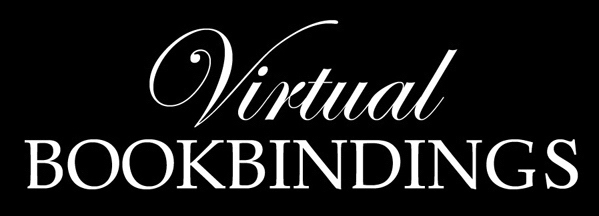

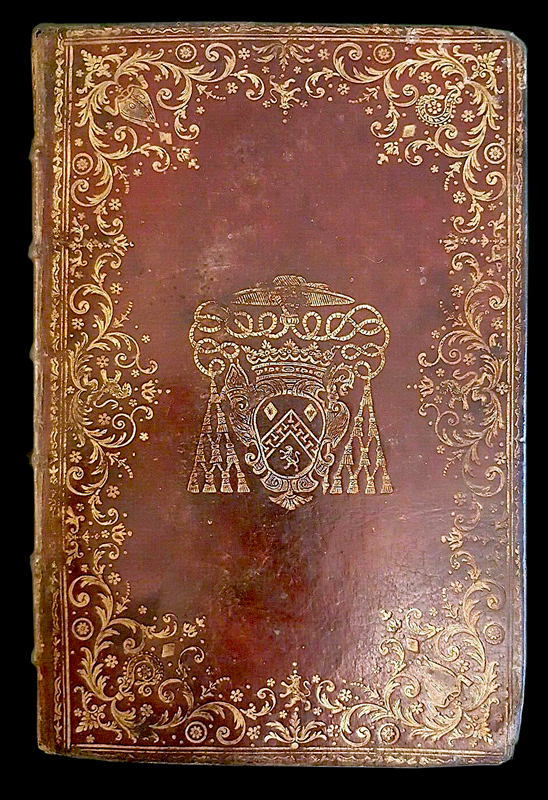
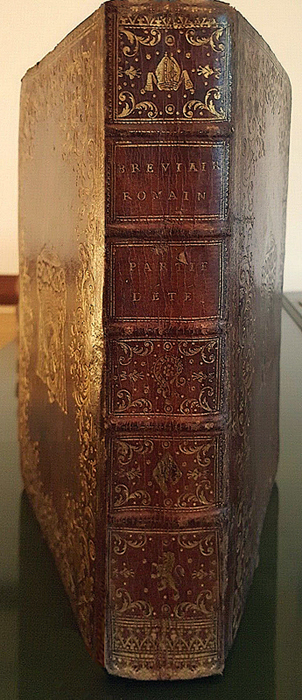
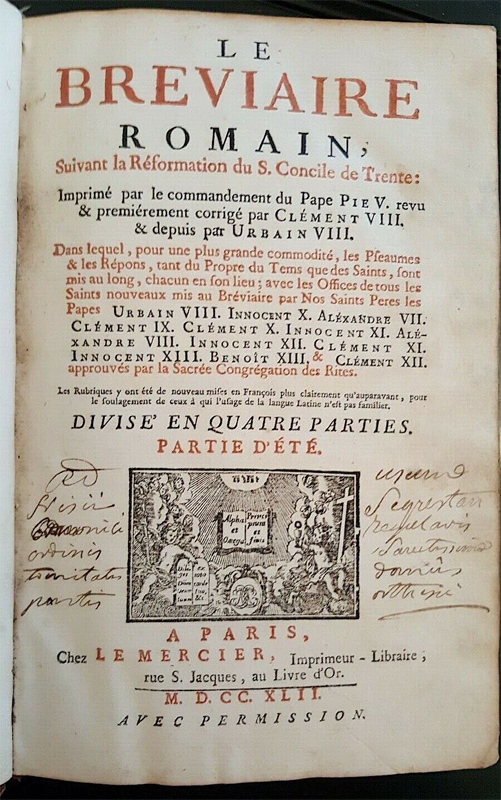
| I discovered this Delorme dentelle binding on eBay in June 2020, and only just now am I able to tackle the task of cataloguing the many Imprints found on this elaborate dentelle that has been fashioned mainly with the tools of Dubuisson. In June of 2020 I was just completing an exhaustive study of everything by Delorme and of course I recognized here some of Delorme's tools, this meant that I had to buy this treasure no matter what the cost. Fortunately it had some big flaws that meant most collectors would not be bidding on it. There was also the sticky question of the armes decorating this book, the seller claimed that they were the armes of Guesclin, evêque de Cahors and they may well be however the printing date of this Breviaire Roman is 1742 and this is not a binding that was made at that time as we can see by comparing it with a 1763 Almanach Royal where we see many similar tools and more importantly a very similar design layout. |
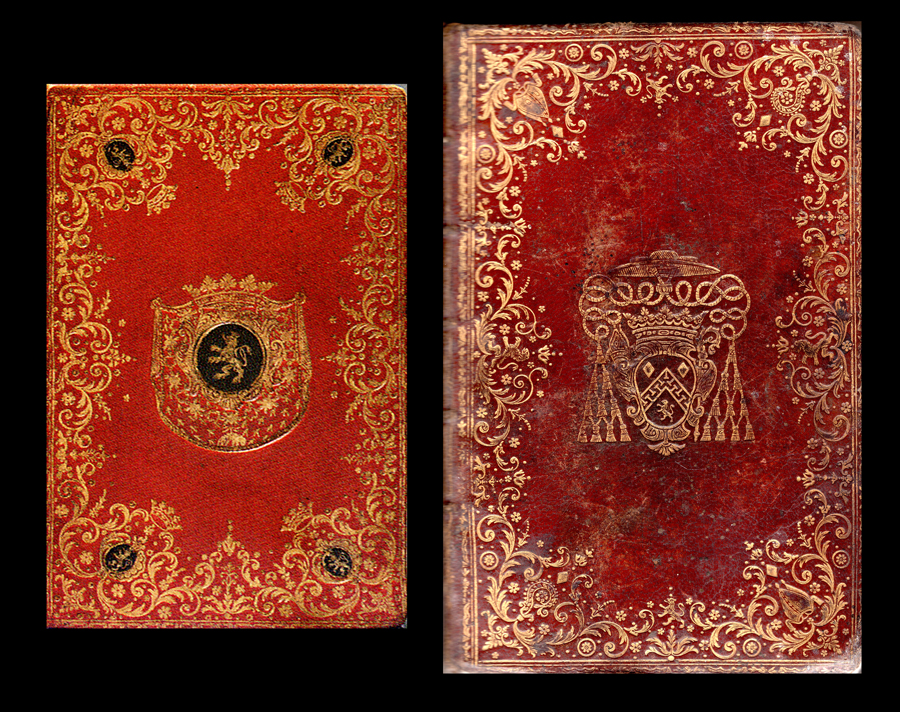
|
In Comparative Diagram 1, we compare a 1763 Almanach Royal that is found in a 2004 Christies Auction. (click here to see this) Almanach royal, Année M. DCC. LXIII. Paris: Le Breton, 1763. In-8 (190 x 128 mm). Vignette de titre gravée sur bois aux armes royales. RELIURE DE L'EPOQUE: maroquin rouge, dentelle composée de grands fers floraux alternant avec de plus petits fers, fleurettes, et points, fers d'angles mosaïqués de pièces de maroquin noir frappées d'une pièce d'armes au lion armé, couronné, et lampassé (Bournonville, Guigard, II, p. 84, non décrit dans Olivier), dos orné du même lion répété entouré de fleurettes et d'étoiles, pièces de titre de maroquin olive, roulette intérieure et sur les coupes, doublure et gardes de soie rose, tranches dorées, (charnières et coins frottés). PROVENANCE: descendance du duc et prince Alexandre de Bournonville (1662-1705, armoiries sur les plats) -- François de Bournonville (ex-libris gravé). Reliure à dentelle aux armes mosaïquées d'un descendant du prince Alexandre Albert de Bournonville. Seul le support de l'écu de son ancêtre, à la robe d'hermines des pairs de France, à l'ordre de la Toison d'or, a ici été utilisé, la pièce d'armes originale étant recouverte d'une pièce de maroquin mosaïquée. Le prince de Bournonville, numismate admiré du Père Anselme, fut également un grand bibliophile, dont la collection fut vendue à l'encan en sa demeure en 1706. Les plus beaux exemplaires de la collection furent acquis par Gaignières. L'ex-libris armorié figurant au contreplat portent le nom de Ex[cellentissi]mi D.D. Francisci de Bournonville. Unfortunately the Christies reproduction of this binding is not good enough to make detailed comparisons, we can see however enough of the detail to identify an imprint that I think is not a Dubuisson imprint but rather one of Delorme's post Dubuisson tools, that I have catalogued previously as del-14 |
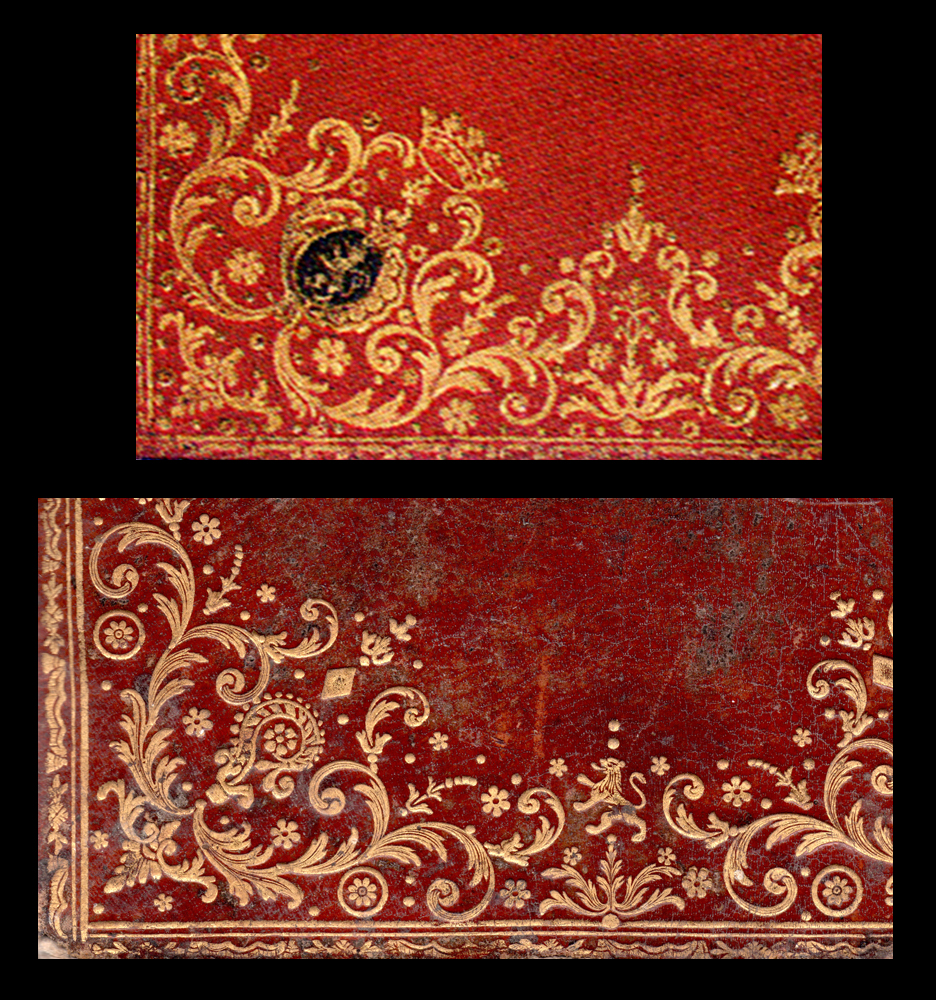
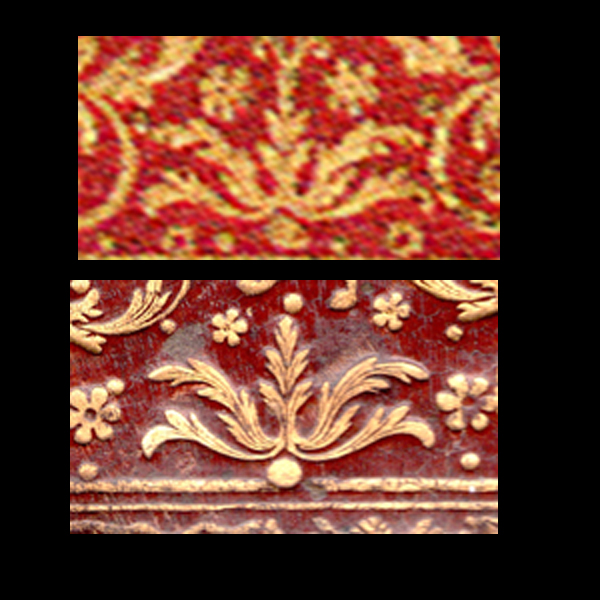
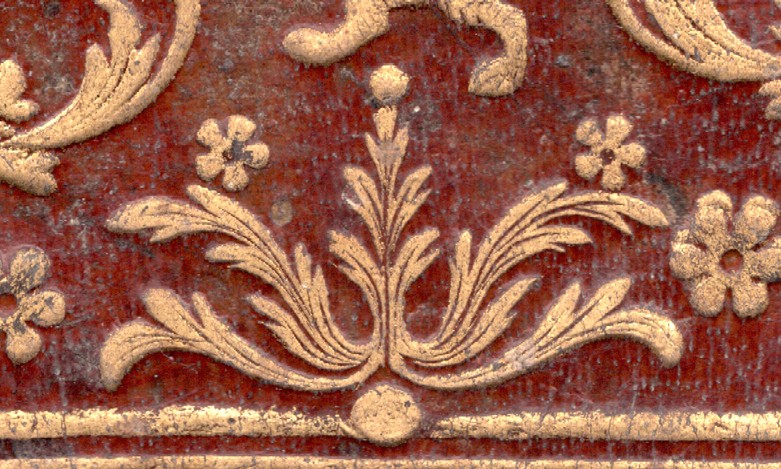
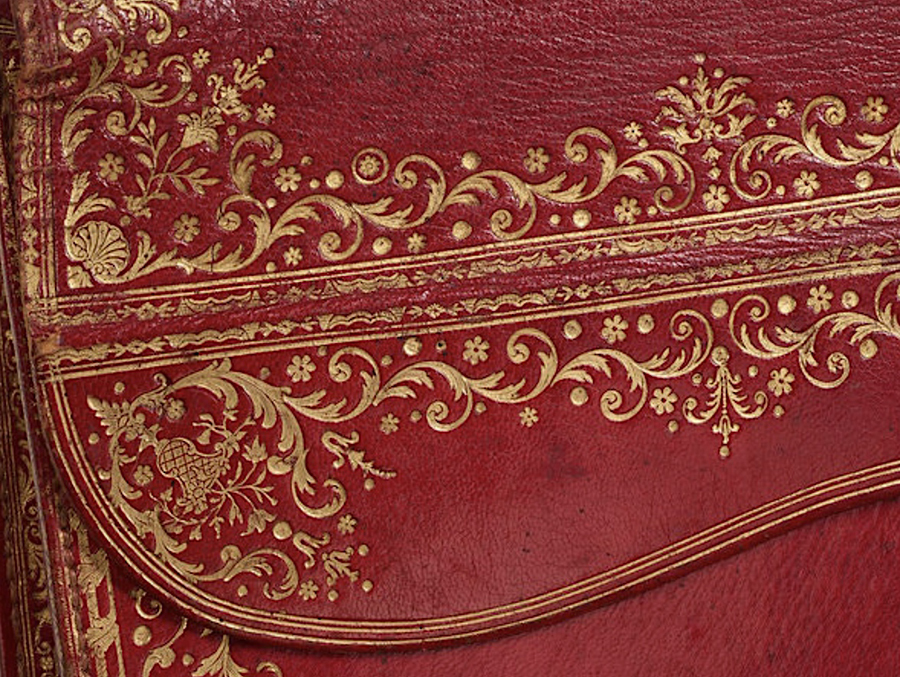
| In Comparative Diagram 5, we see a del-14 imprint in Delorme's decorative detail of Voltaire's Portefeuille (shown on a previous page) The del-14 is not so common in Delorme bindings, after looking through my previous Delorme pages, I can only find these few examples. Coincidentally we see in this decoration many tools that are found in our 1742 Breviaire, particularly the framing roulette that is shown below in Comparative Diagram 6. Giles Barber loved roulettes and catalogued many. We see that his ROLL 94 is a match with our Breviaire examples. Delorme employed this roulette on many of his Almanach Royal bindings. This is however a Dubuisson tool and it can be seen even on one of his early all over design masterpieces that embellishes a 1743 Collombat (click here to see this). |
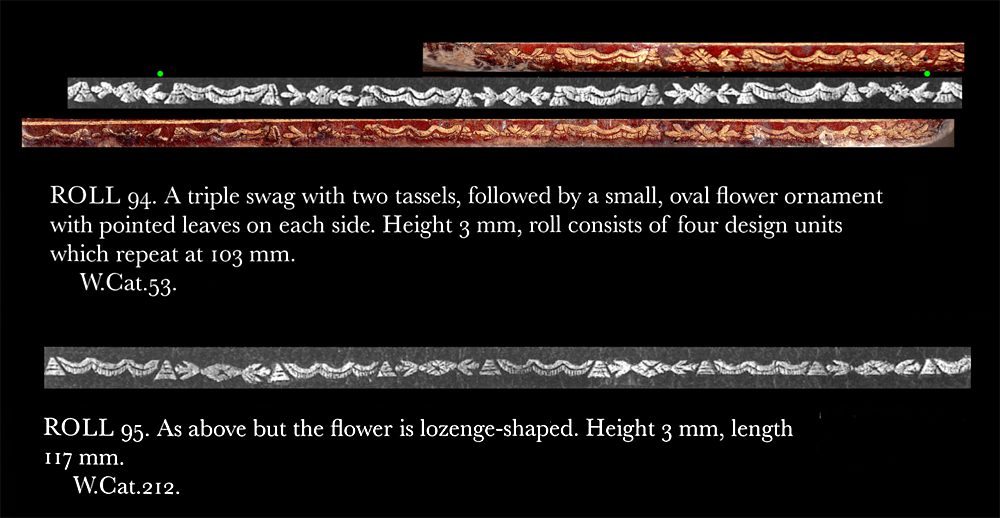

| In Comparative Diagram 7, I have isolated a section of the Barber ROLL 94, and compare it to strips of this roulette found on our Delorme binding. Barber must have realized the critical dignostic value of roulettes, that are filled with so much information. Here is the DNA code of each binder by which he can be identified infallibly, providing that is, if you have high resolution images of them. In our examples here, I show with the green letter 'a' a flaw in the execution of the design of the triple swag. Green arrow 'b' is pointing to another sort of flaw that can also be seen in Barber's model. The arrows above and below the letter 'd' are pointing to a cut that seems to be missing in the model. Actually Barber's model was perhaps overly filled with gold and thus some of the details have been obscured. The arrows above and below the letter 'e' are a similar case of missing detail. The arrow of letter 'F' however points to a detail that does not exist in our Delorme examples, similarly the arrow of letter 'g' is pointing to something that does not exist in our examples. The arrow of letter 'h' is pointing to a missing feature in the tassel of Barber's example. Even with these disparities, I am sure the reader will agree that these imprints derive from the same tool, a tool that was first used by Dubuisson perhaps as early as the 1740's and then, many years later by Delorme well into the 1770's. |
|
click here to return to the HOME page. click here to see an INDEX of the 2017 pages. see below links to previous work |
| Even experts are sometimes wrong, before you spend thousands on a book, please do your own research! Just because I say a certain binding can be attributed to le Maitre isn't any kind of guarantee, don't take my word for it, go a step further and get your own proof. In these pages I have provided you with a way of doing just that. |
| Virtual Bookings, created by L. A. Miller | return to the Home page of VIRTUAL BOOKBINDINGS |